The Fujian Assembly Hall: Everything You Need to Know Before You Go
The Fujian Assembly Hall in Hoi An Ancient Town, Vietnam, is a 300-year-old landmark built by Chinese immigrants who settled in the town. Visiting this hall gives you the chance to admire its traditional Chinese architecture, learn about its rich history, and enjoy the peaceful atmosphere inside its courtyards.
This is your complete guide to the Fujian Assembly Hall in Hoi An—covering its history, opening hours, tickets, and the best tips for making the most of your visit.
History and cultural significance
Hall architecture
Visitor guide
FAQs
Dear reader, every photo and video you see in this post was taken by us. This article may contain affiliate links—if you find something helpful and decide to make a purchase, it supports our work at no extra cost to you. Thank you for being here!
History and cultural significance
In the 17th century, China went through a turbulent time as the Qing dynasty replaced the Ming. Many loyalists of the fallen Ming dynasty refused to submit, and after their failed resistance, some fled with their families across the sea to Southeast Asia. Hoi An became one of the places where they settled.
With permission from the Nguyen Lords of Vietnam, these migrants established the Minh Huong community in Hoi An. They came from five main provinces of southern China—Fujian, Chaozhou, Guangdong, Hainan, and Hakka. Because the Chinese valued community life, each group built its own assembly hall as a place to gather, support each other, and maintain their cultural traditions.
The Fujian Assembly Hall was created for people from Fujian Province. It served as both a meeting place for their community and a spiritual center where they could honor their deities and practice their faith far from home.
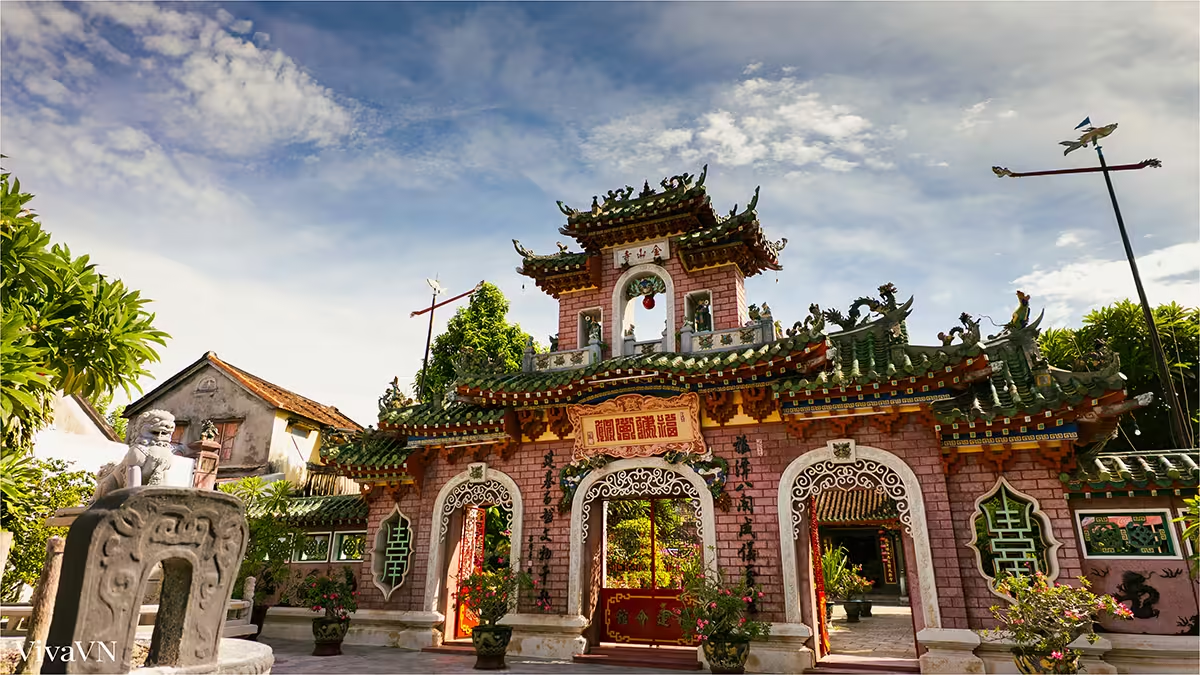
Fujian Assembly Hall main gate
Architecture of the Fujian assembly hall
The entire complex stretches about 100 meters in length and 24 meters at its widest point. Arranged along a straight front-to-back layout, it’s divided into four main parts: the main gate, the courtyard, the main hall, and finally the rear hall.
The main gate
The first thing you’ll see as you approach is the red main gate. Above it hangs a traditional plaque with Chinese characters that read ‘Fujian Assembly Hall.’ The gate has three doorways, but only the two side doors are used for daily entry. The center door stays closed most of the year and is only opened on special occasions. In the past, people believed that keeping the main gate shut would prevent bad spirits from entering the hall.
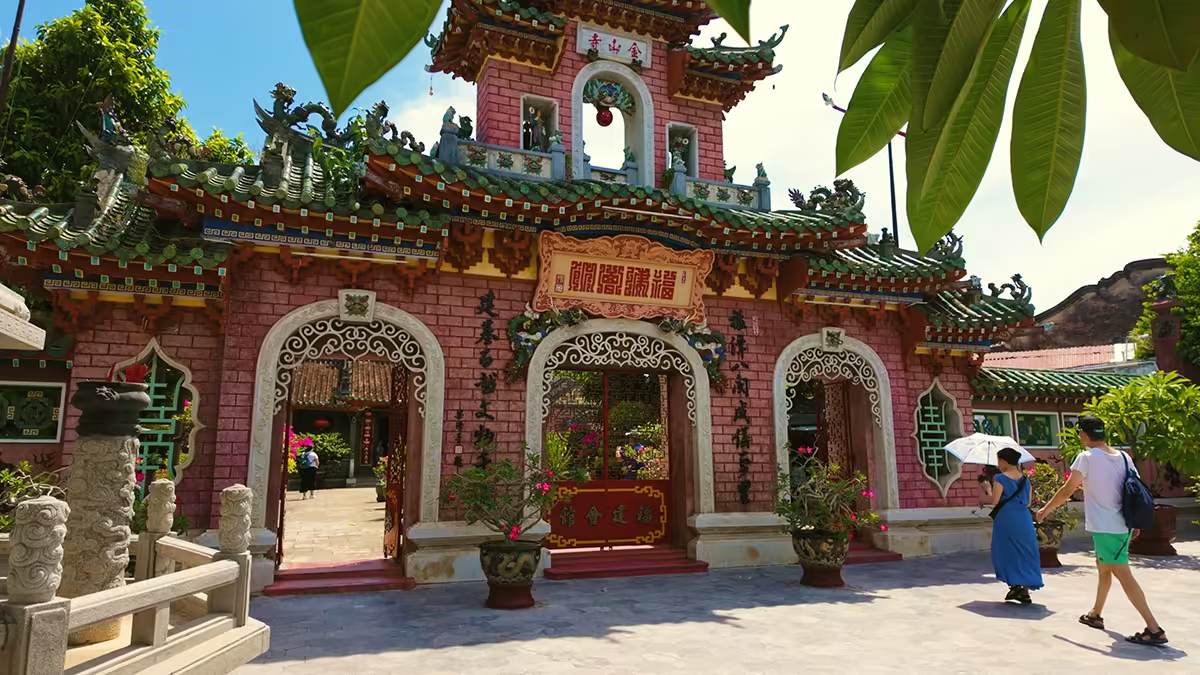
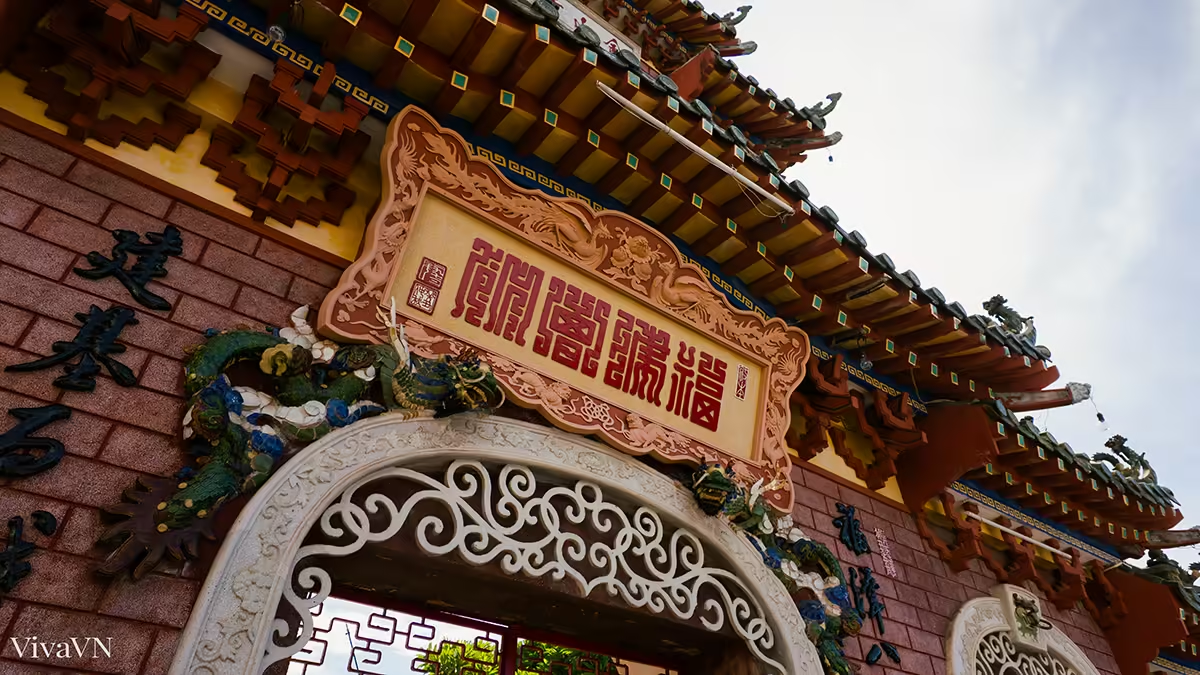
Name plaque of the Fujian Assembly Hall gate
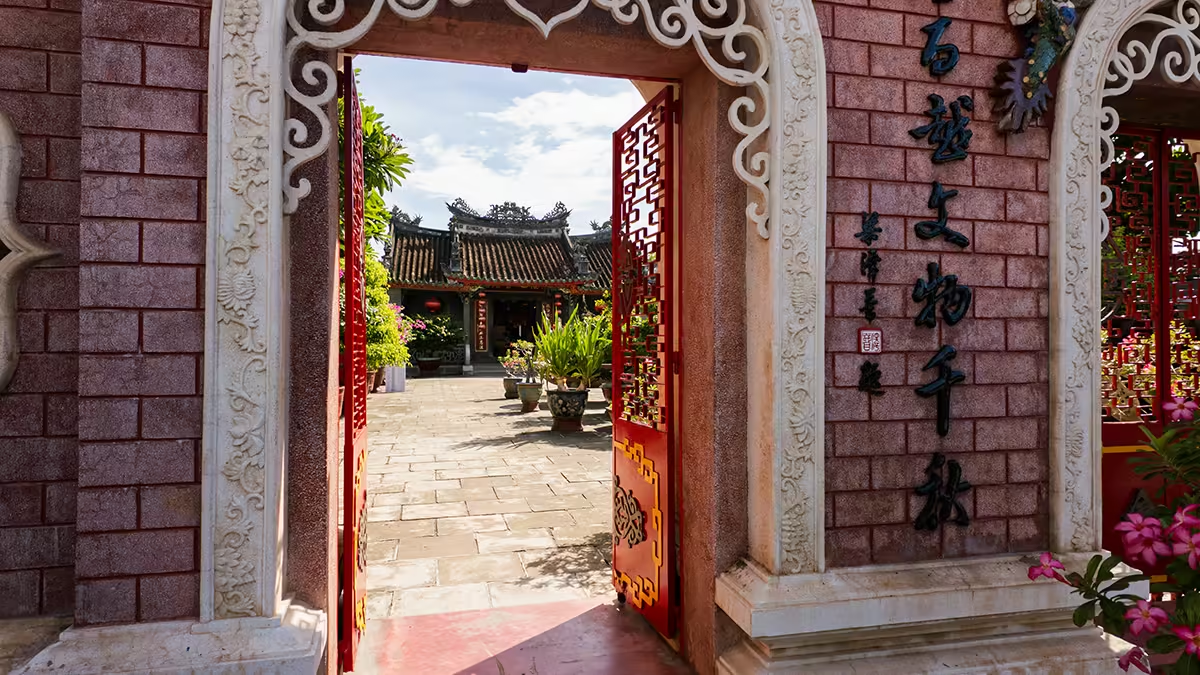
View from the main gate of the Fujian Assembly Hall, showing the courtyard and temple hall
The courtyard
Right past the gate, you’ll step into a small courtyard filled with potted plants and bonsai trees. The space feels calm and welcoming, almost like a pause before you enter the main hall. In both Chinese and Vietnamese architecture, courtyards like this are common—they’re meant to bring a sense of balance and peace to the space.
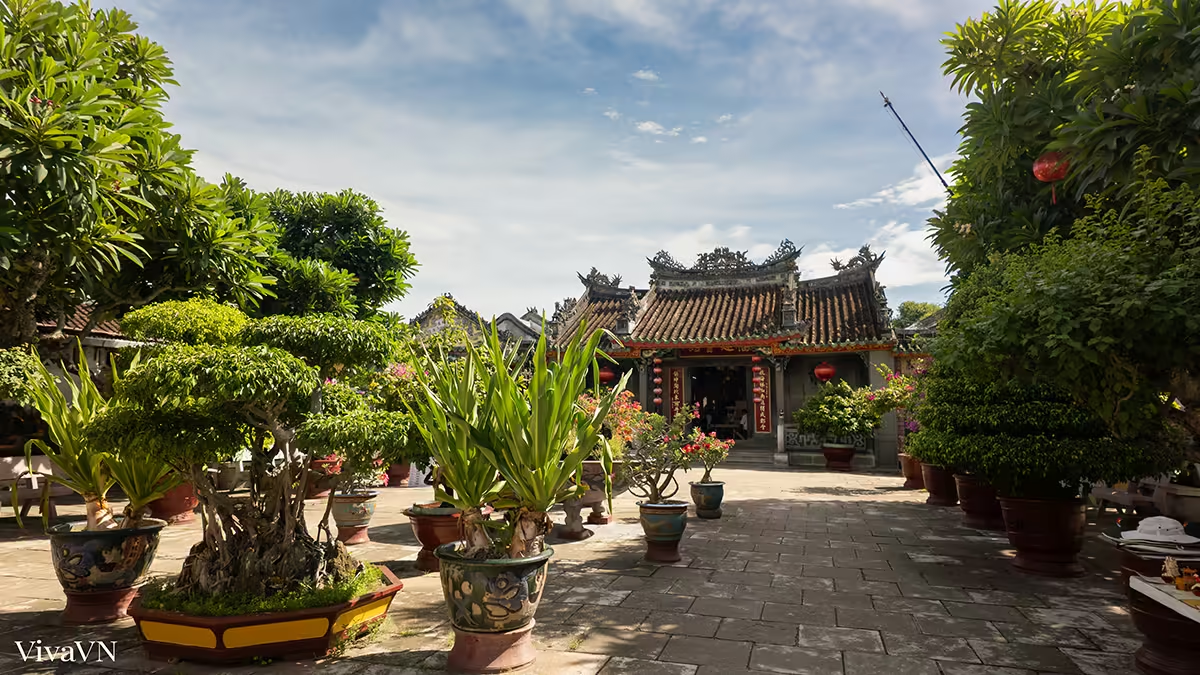
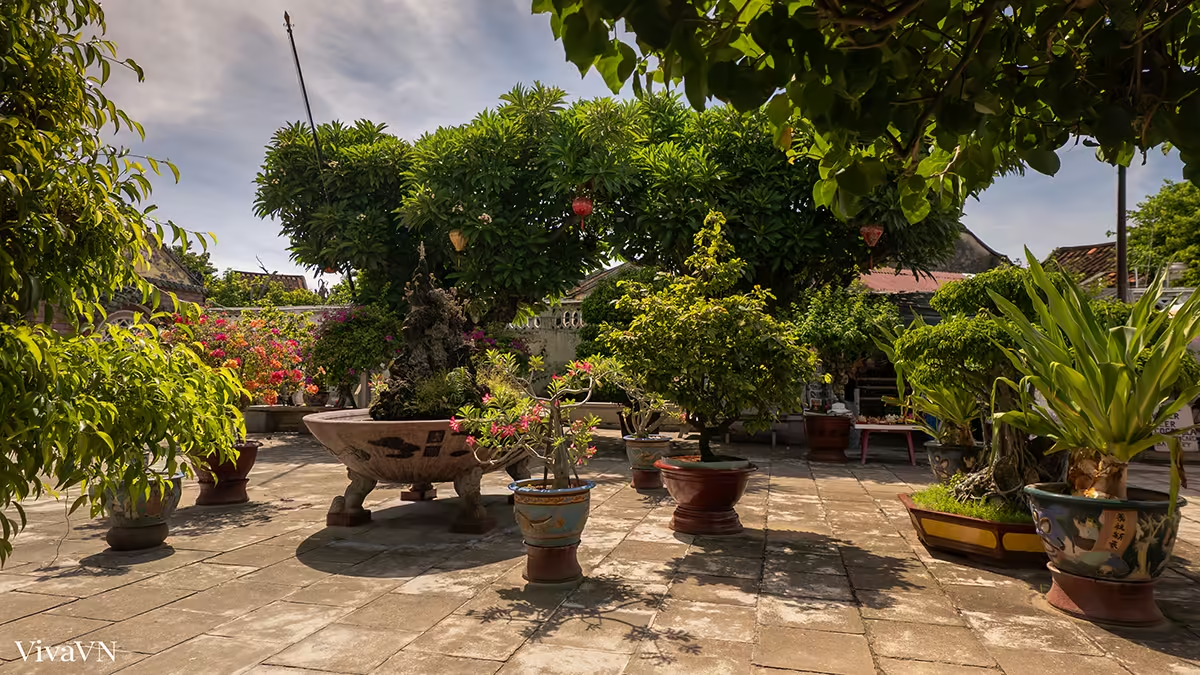
The main hall
The facade of the main hall looks modest at first glance, with weathered roof tiles that hint at its age. But step inside, and the scene changes—the hall opens up in deep shades of red, giving it a solemn yet striking atmosphere. Right at the entrance stands a long stone table, once used by members of the Fujian community to gather and discuss important matters.
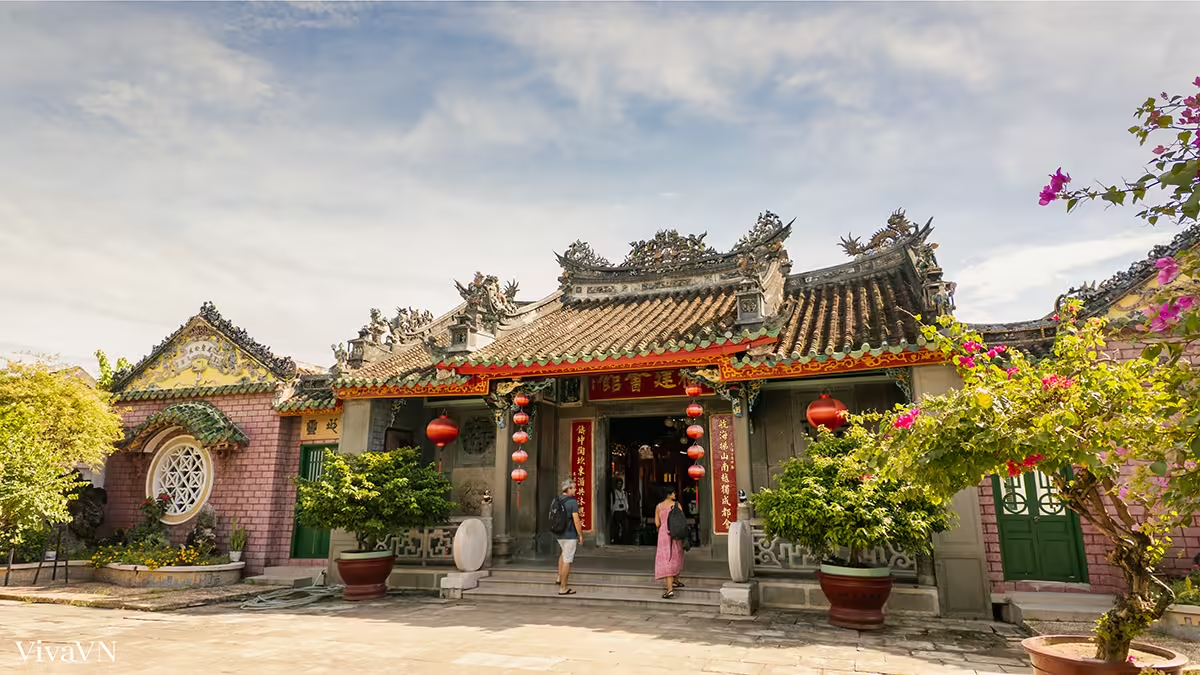
Main hall facade of the Fujian Assembly Hall
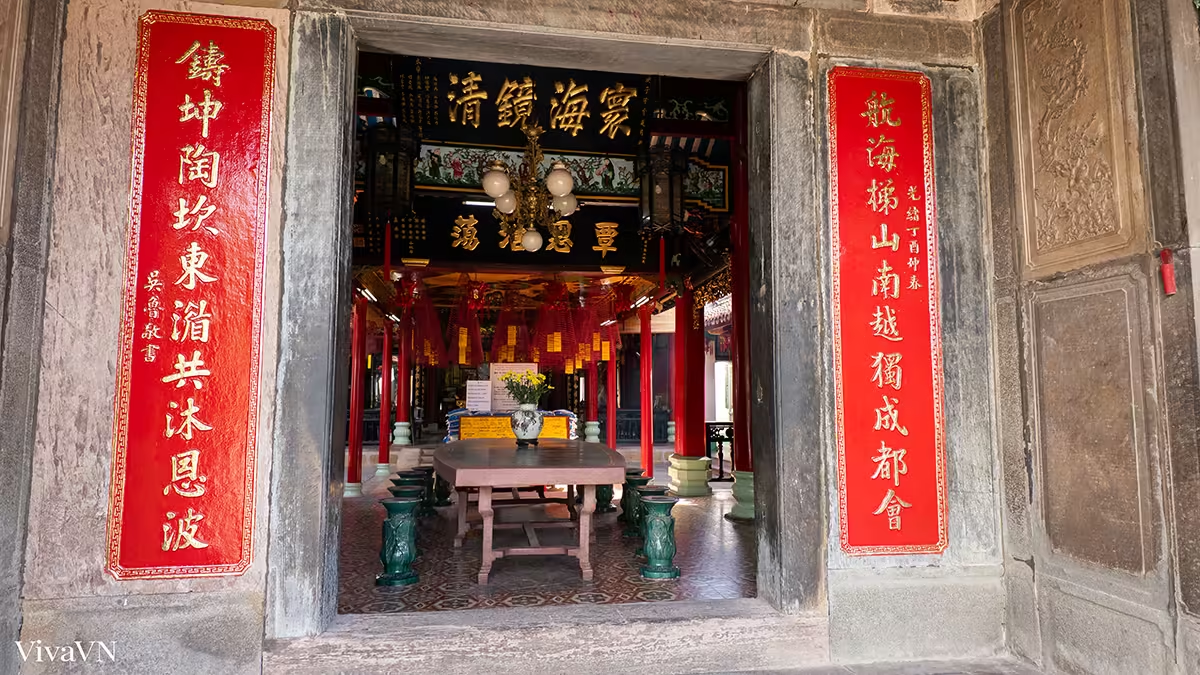
View from the entrance into the main hall of the Fujian Assembly Hall, with its red interior and historic stone table.
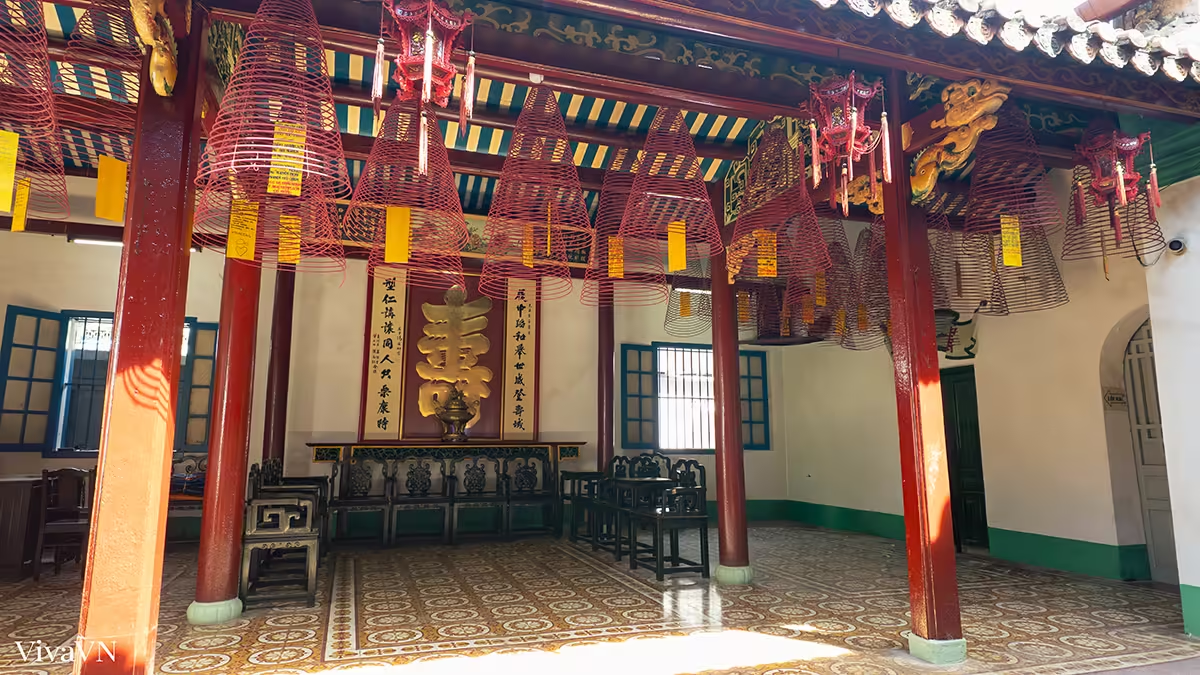
Side wing of the Fujian Assembly Hall
The roof is supported by rows of striking red wooden columns. Hanging from the ceiling are large incense coils, and if you look closely, you’ll notice a small yellow tag attached to each one.
Visitors write down their wishes or prayers on these tags before hanging them with the incense. When the coil finishes burning, the caretakers of the hall collect and burn the tags—an act believed to help send those wishes to the divine.
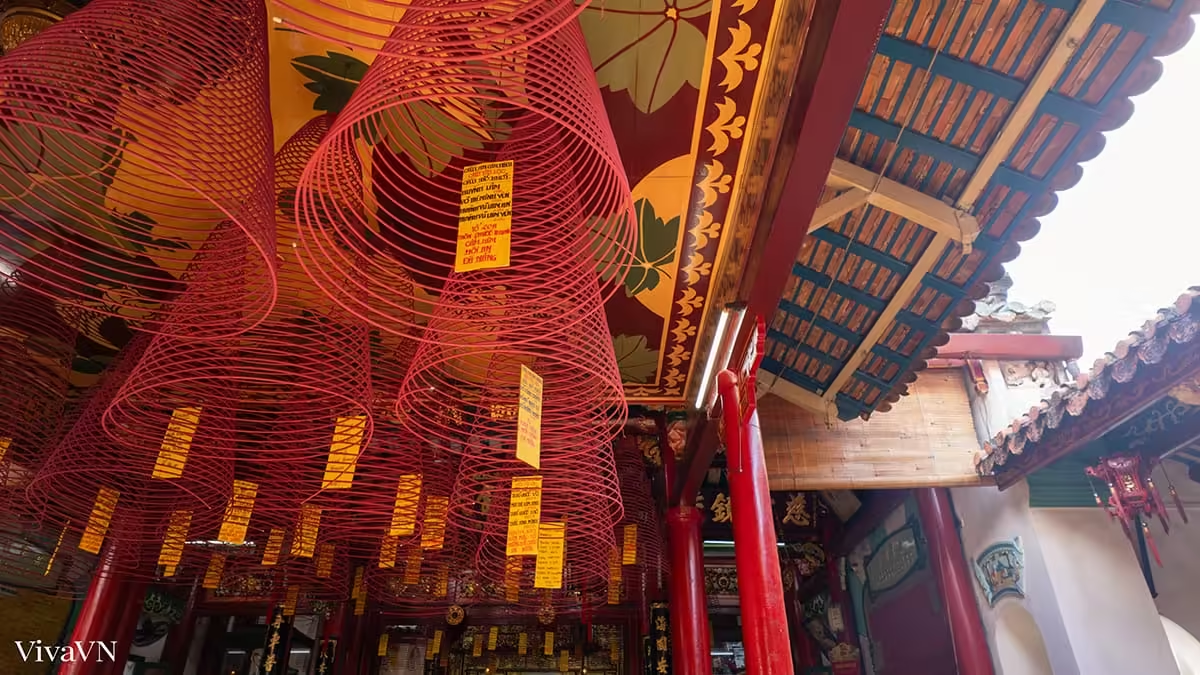
The hanging incense coils carry small tags where visitors write down their wishes and prayers
At the very center stands the altar of Thien Hau, the sea goddess worshipped by the Fujian community. According to legend, she was born in Fujian and was known for her ability to swim and rescue people from shipwrecks. After her death, locals began to worship her as a protector of sailors, praying for her blessing before setting out on dangerous sea journeys.
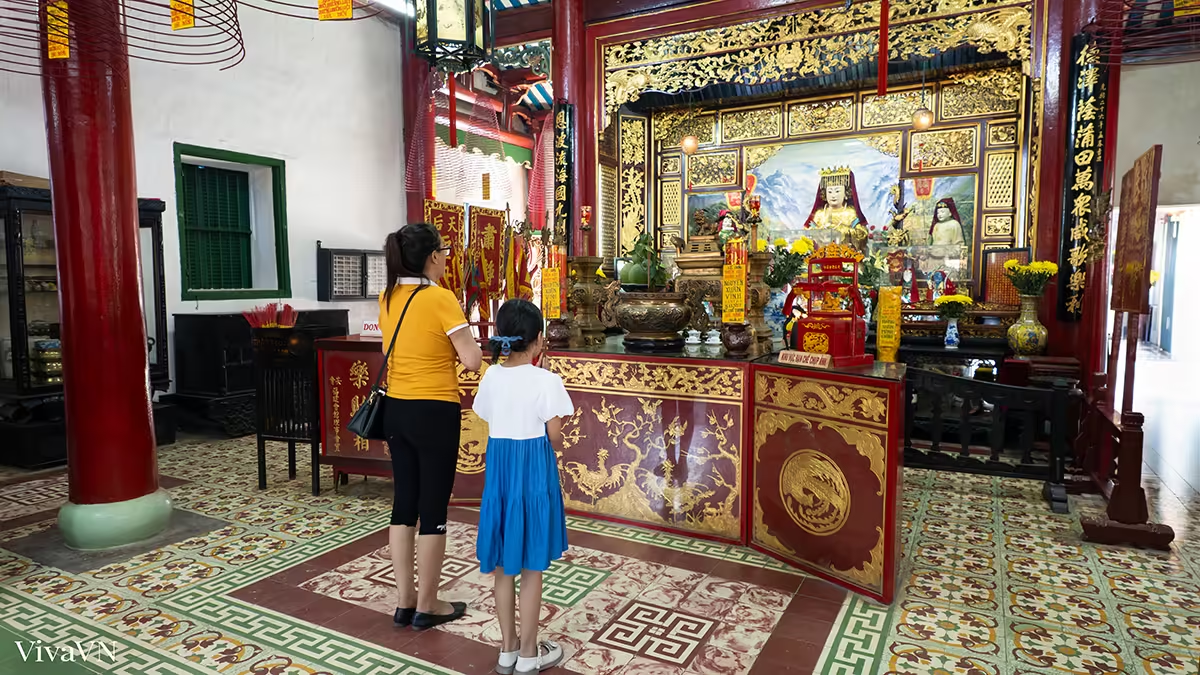
Thien Hau altar at Fujian Assembly Hall with visitors praying
The walls are decorated with murals showing Ming generals resisting the Qing dynasty and the perilous sea journeys that brought the Fujian settlers here. In addition to these murals, there’s also a model of the boat used by Fujian immigrants, complete with the supplies they carried for life at sea.
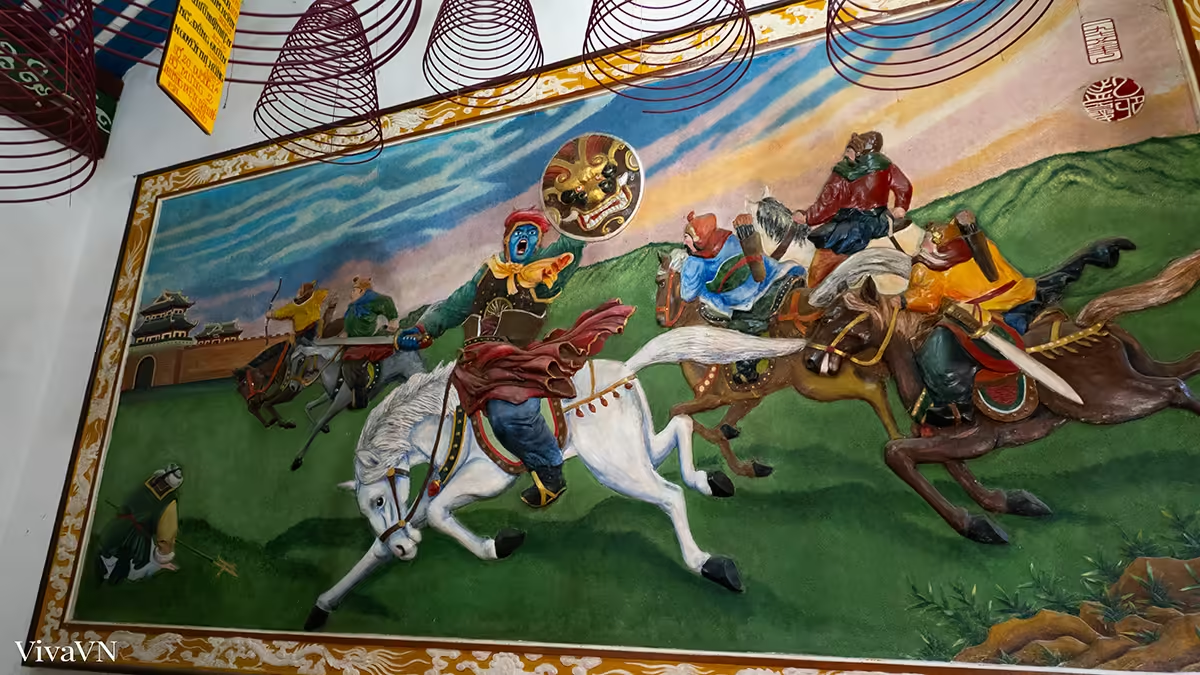
One of the temple’s murals illustrates Ming generals resisting the Qing dynasty before their eventual journey to Hoi An

This mural shows the perilous voyage across stormy seas, while Thien Hau, the sea goddess, appears in the top left corner with her attendants to bless and protect the travelers.
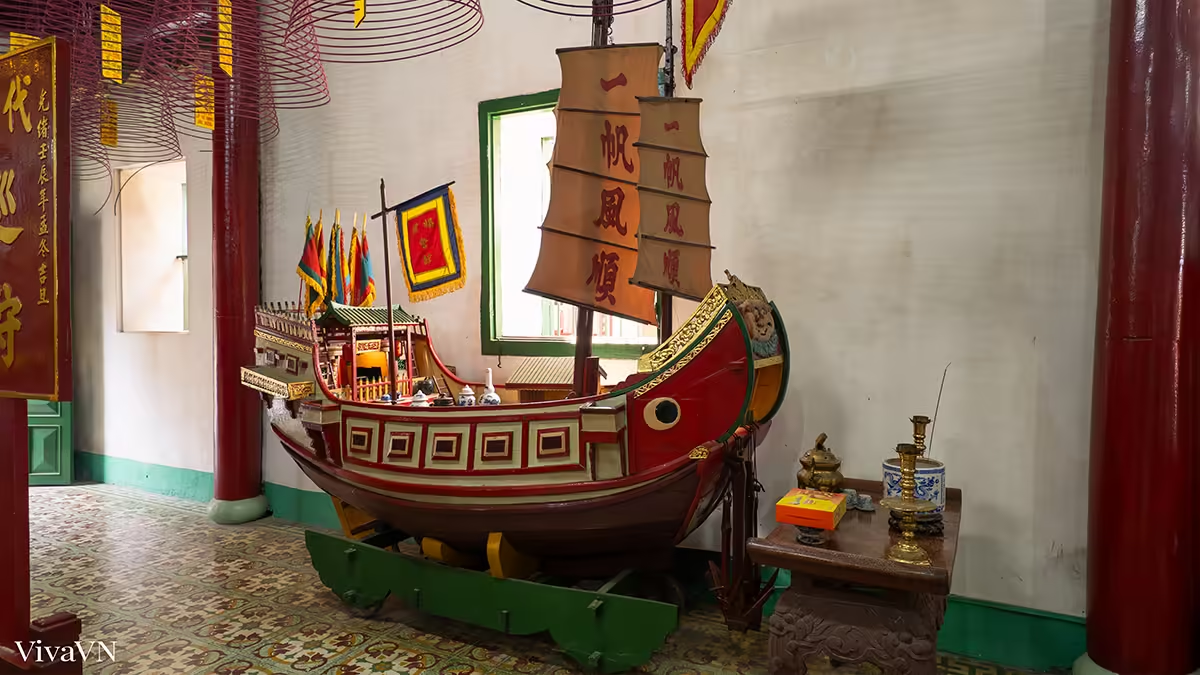
A model of the boat that carried Fujian settlers to Hoi An
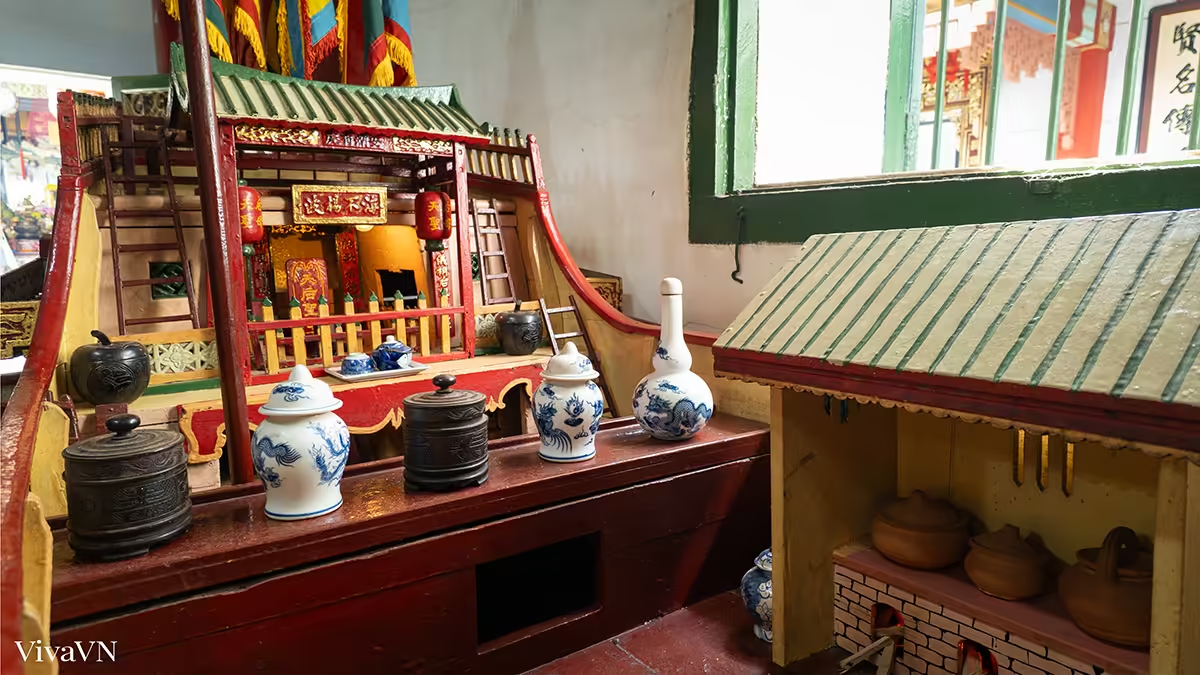
Everyday items that Fujian settlers brought with them on the boat
The rear hall
If you walk all the way to the back, you’ll find a rear hall. This space is dedicated to six Fujian generals who fought against the Qing dynasty. After their defeat, they brought their families by sea to Hoi An, and today the altar here honors their legacy
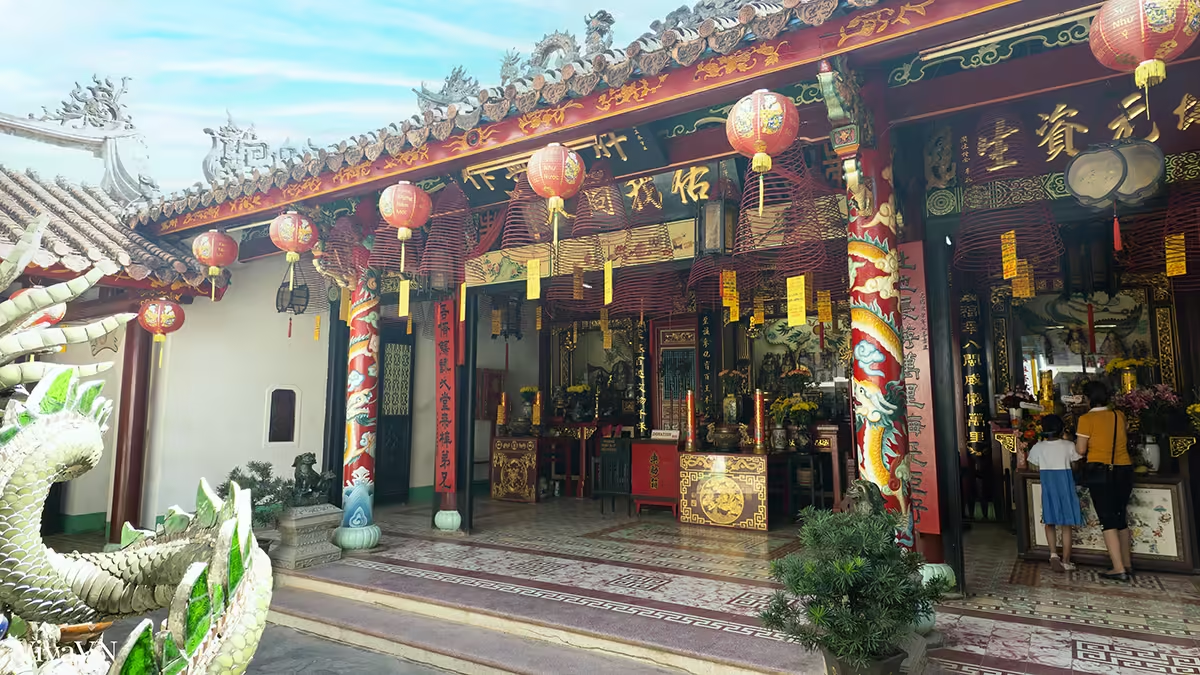
The rear hall of the Fujian Assembly Hall, where six Fujian generals are honored
Everything you need to know before visiting the Fujian Assembly Hall
Address: 46 Tran Phu Street, Hoi An Ancient Town
Opening hours: 7:00 AM – 6:00 PM daily
Tickets: You’ll need a Hoi An Ancient Town entrance ticket (120,000 VND, about 5 USD per person). This ticket gives you access to five attractions of your choice, which can include assembly halls, old houses, museums, and temples. Tickets are sold at official booths scattered around the old town.
Dress code: Since this is a sacred site, it’s best to dress modestly—covering your shoulders and knees is recommended.
Our tip: From our experience, visiting between 7:00 and 9:00 AM is the best time. The hall is much quieter, with fewer tour groups, so you can really take in the atmosphere and snap some great photos without the crowds.
Frequently asked questions about visiting the Fujian Assembly Hall
What is the Fujian Assembly Hall famous for?
It’s best known for its stunning Chinese-style architecture, the altar of Thien Hau (the sea goddess), and the beautiful incense coils hanging from the ceiling. Many visitors come here to learn about the history of the Fujian community in Hoi An and to enjoy the peaceful atmosphere.
Are there other assembly halls nearby that I should also see?
Yes! When you buy the Hoi An Ancient Town ticket, you’ll see them marked on the town map. Besides Fujian, you can also visit the Cantonese Assembly Hall (Quảng Triệu), Chaozhou Assembly Hall (Triều Châu), and Hainan Assembly Hall (Hải Nam). Each has its own unique architecture and stories, and they’re all within walking distance.
How long does a visit usually take?
There’s no time limit. You can stay as long as you like during opening hours.
Can I take photos inside?
Yes, photography is allowed
Share on FacebookShare on X (Twitter)Share on PinterestShare on WhatsappShare on LinkedinShare on TelegramShare on Email
- https://www.youtube.com/@VivaVNOfficial
- https://www.facebook.com/vivavnofficial2024
- https://www.pinterest.com/vivavnofficial/
© 2025 VivaVN. All rights reserved.

Leave a Reply